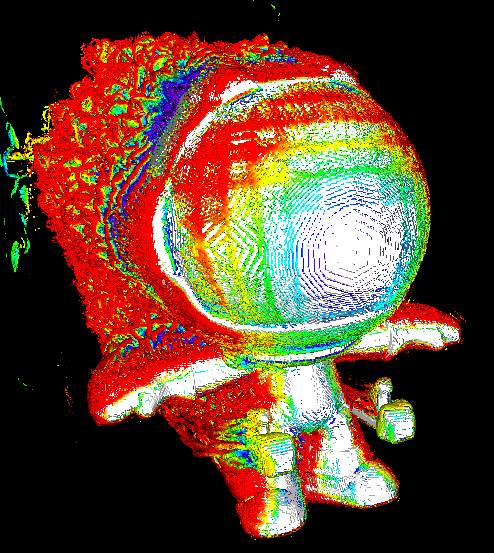my reasoning: the actual colors we can see -> the wavelengths that we can extrapolate to -> basically extrapolated wavelengths plus an ‘unpure-ness’ factor -> not even real wavelengths (ok well king blue and maybe lavender if I’m being generous could be)


I guess you could call this pink but I would normally think of it more in the magenta range of
but I would normally think of it more in the magenta range of
 or
or

in the c/196 banner there is more red than green, meaning the fully saturated version wouldn’t correspond to a real wavelength
anyways, I’m not trying to say that those colors don’t exist because obviously we can see them, just that they show the weaknesses of human color perception
Salmon
Fuscia the dye
Fuscia the flower on the stem.
Temba, his arms wide
oh don’t worry, there’s multiple specific ways to define colors. you can go out and buy a book that literally just has thousands of defined tones and their specific names. chartreuse has a hex code and a specific rgb value for example. you’re right though, laymen don’t have the right vocabulary to define colors specifically.
the only real point you have here is that color is defined by human perception. even the colors you call real are just abstractions based on what range of wavelength is visible to human perception.
all colors are defined be human perception. the only way to remove yourself from that is to use strict wavelengths. or you can realize you are a human and the only meaningful way to define this is by our perception.
sometimes suddenly you can’t pretend color is just red green and blue, once you get diffraction or are using a spectral renderer or smth, but yea it works 99% of the time
I’m having trouble following you here, but it sounds like you’re just saying that the other colora are derived from mixing the primaries. that doesn’t make the colors you get from that a mental illness??
is mud not real because it’s just wet dirt? is steel not real because it’s just iron with added carbon? that’s silly.
if your only point is that non primary colors are made by mixing primary colors then congrats, you’ve taught a kindergarten lesson very badly.
Aren’t primaries magenta, cyan and yellow? I was under the impression that the is a thing because monitors emit light, but in nature surfaces reflect it, hence the primari colors “shidt”.
I agree with you, the other commenter is cooked as hell to insist that their limited understanding of colours is absolute.
They are for subtractive color. Additive is RGB. But it’s not that the colors are “different” per se, just that properties of light versus pigment are different when blending. Your eyes still interpret both the same.
I was saying there are times when you can’t treat other colors as being made form primaries, specifically when the spectrum will later be separated. (by diffraction or by materials with a complex spectral response)
for example, you could have 2 clear yellow sheets that look identical when placed in front of a full spectrum white light. However, one lets through red and green and one lets through yellow wavelengths. Suddenly now they behave very differently when you put them in front of a green light - the one that only lets through yellow looks black and the one that lets through green looks green.
going back to the part where I labeled yellow as a slippery slope, its because we can’t really see whether there are yellow wavelengths or not in examples like these or others
also, a fun side note, you can actually see diffraction patterns by looking through any aperture (but a diffraction grating will make it more obvious) and these respond noticeably differently to all wavelengths and look wrong if you only consider the primaries. So, technically, if you’re looking at any scene through any sort of camera/lens system/eye, you can’t treat the scene as only having 3 primaries as it would look (imperceptibly) different if you considered all wavelengths. Actually, recreating this video in Python is what got me thinking about this. If you look at a very bright white point of light made of very specifically only red green and blue wavelengths you might actually be able to see this, it should look like
instead of
(its very subtle and you might need to zoom in but it looks a lot more noisy)